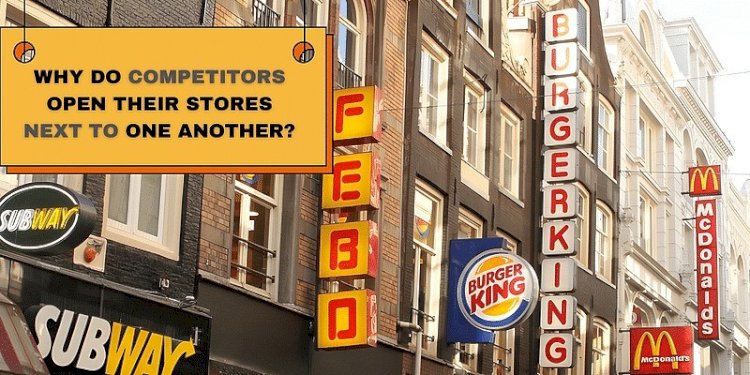Do you know why competitor brands open their stores right next to each other?
Competitor brands often open stores next to each other to capitalize on high foot traffic and target similar customer demographics. This strategic placement fosters direct comparison among consumers, driving competitive pricing and service improvements. Additionally, clustering stores creates a shopping destination, benefiting all businesses involved by increasing overall visitor numbers and sales potential. This phenomenon highlights the importance of location and competition in retail strategy.

When it comes to business, there's a prevailing belief that launching a venture in an uncontested market ensures automatic success. The theory suggests that with no competitors, all demand will naturally gravitate towards that single enterprise. However, this assumption is not entirely accurate, as you may have observed yourself on multiple occasions.
In Cities, it's typical to see clusters of clothing stores featuring various brands, or groups of similar restaurants and hotels situated close together. Even popular fast-food chains like Subway, McDonald's, and Burger King often compete for customers in nearby locations. The same pattern applies to petrol pumps. While this proximity might seem counterintuitive, these well-known brands strategically benefit from this arrangement. This approach leverages customer traffic and increases visibility, ultimately driving business and enhancing overall competitiveness.
The scenario described involves a strategic situation known as game theory. Here’s a concise explanation:
Game theory is a strategic framework used to analyze decision-making in competitive situations where the outcome of one participant's decision depends on the decisions made by others.

For example, consider two ice cream vendors setting up stalls on a one-kilometer-long beach. Initially, they position themselves 500 meters apart, each attracting customers from their respective sides. Customers located between the vendors are split between them. This illustrates the strategic decisions vendors make to maximize their market share and profits, considering the actions and reactions of their competitors.
The addition of a new vendor in the middle of the beach disrupts the customer distribution, with the new vendor initially capturing 62.5% of customers and the existing vendor retaining 37.5%. In response, the other vendor adjusts by also moving to the middle, evenly splitting customers again. This cycle repeats, creating a stalemate where neither vendor can gain a competitive advantage or expand further.
In game theory, this state of affairs is termed a Nash equilibrium, characterized by a scenario where each participant's strategy is optimal given the strategies of others, resulting in a stable outcome where no player has an incentive to unilaterally deviate from their current strategy. This equilibrium illustrates the competitive dynamics and strategic decisions involved in such business scenarios.
In game theory, when the first company strategically chooses to open its store in an area with high business potential after thorough research, it creates a competitive scenario for other companies. The remaining companies, unable to access the same exclusive information, then decide to open stores nearby in the same area to attract customers. This strategic move by the first company often means that subsequent companies can benefit from the established customer base without having to work as hard to acquire customers themselves. This illustrates a classic example of competitive positioning and the dynamics of strategic decision-making in business.
Conclusion:
Competitor brands often choose to open their stores in close proximity to each other due to the benefits of increased foot traffic and visibility. This clustering strategy creates a shopping destination, making it convenient for consumers to compare and choose between similar offerings. Additionally, proximity fosters healthy competition, driving innovation and better customer service. Ultimately, this concentrated presence can enhance the overall appeal and competitiveness of the area, benefiting both businesses and consumers alike.

 Yati Garg
Yati Garg 






















